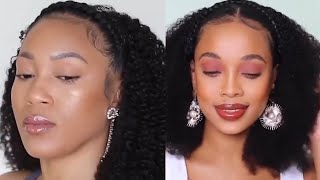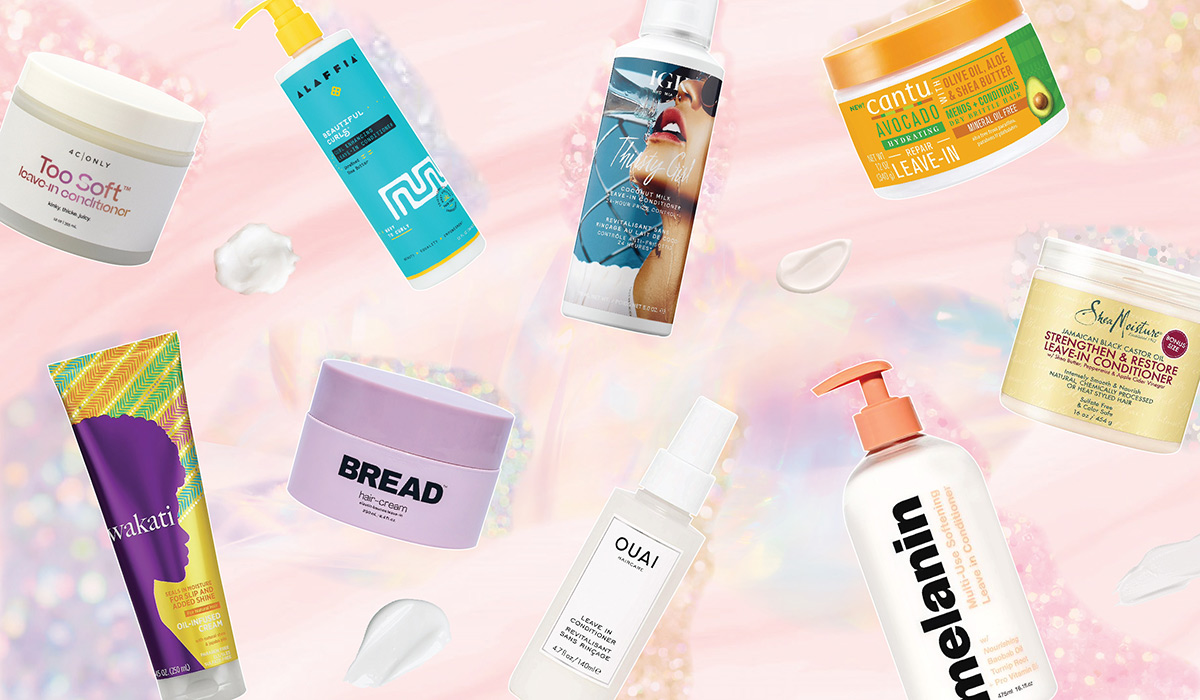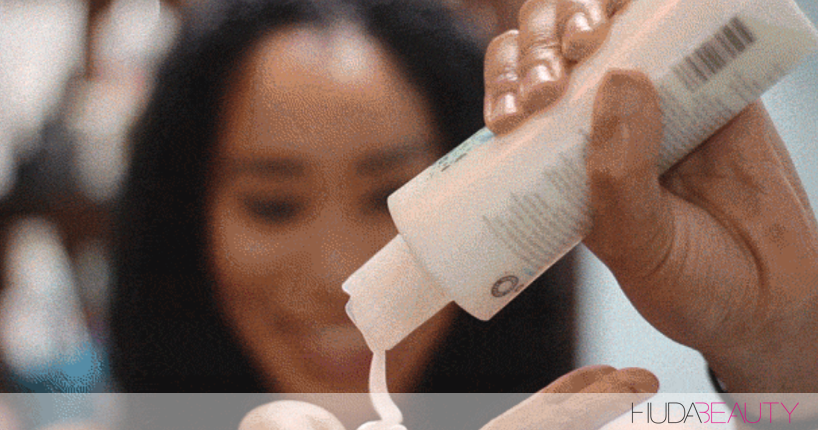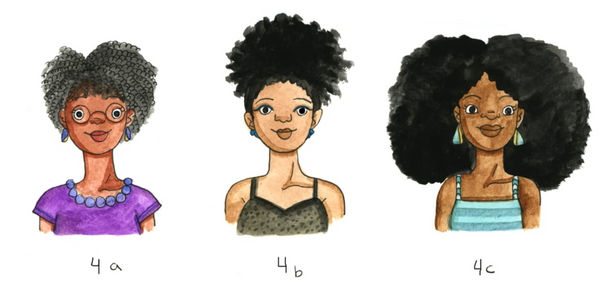Naturally Curly Hair Types: Discover Yours
Curly hair is definitely on the rise again, steadily gaining popularity within the past decade. The internet has allowed other women with curly hair to share the methods and regimens that they use when wearing their hair in its natural state. This surge of information has driven a host of women from all backgrounds to begin caring for their hair the correct way, as opposed to trying to treat it as if it were straight.
Unbeknownst to many, there are 3 different types of curly hair– loose curls, ringlet curls and tight kinks and coils. Although they are all categorized as being ‘curly’ hair, they all have different needs in terms of products and maintenance.
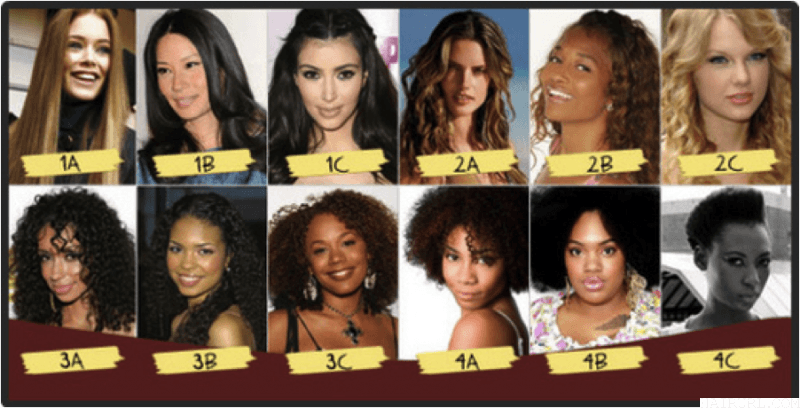
Different Hair Types for Curly Hair
Here’s what you need to know about the different types of naturally curly hair. Find in which one your hair falls so that you can take care of it accordingly.
Type 2

Type 2 hair is classified as more of a wavy hair texture with a variety of loose curls. Type 2a hair is wavy with no actual ‘curl pattern,’ type 2b is a mixture of wavy and loose curls (otherwise known as beach waves), and type 2c hair has loose curls.
Since Type 2 hair is relatively straight, it can pretty much be treated as such. A light mousse can be added in order to encourage the hair to curl, but make sure you don’t use too much in order to avoid making the hair crunchy. Follow up with a light serum in order to lock in moisture and prevent frizz.
Type 3
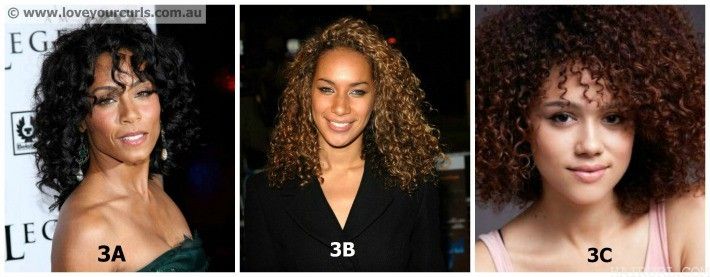
Type 3 hair is classified as having a variety of large, corkscrew/ringlet curls. Type 3a hair is an “S” curl described as having the circumference of the width of sidewalk chalk. Type 3b hair is a bit coarser and is described as having the circumference of a Sharpie marker. Type 3c hair is the coarsest of type 3 hair, with the circumference of a pencil.
Type 3a hair can be cleaned daily, but only with a cleansing conditioner. This hair should be styled with mousse using the rake and shake method and followed up with a serum or pomade.
Type 3b needs to be handled a little more delicately than 3a. This hair should be moisturized daily but does not need to be cleaned daily in order to preserve the hair’s natural oils. Type 3b hair should use a lightweight leave-in and be styled with styling milk or cream in order to encourage clumping. Follow up with a lightweight oil/serum in order to lock the moisture into the hair and prevent frizz. Deep condition this hair once a week in order to keep the hair healthy and moisturized.
Type 3c can handle thicker products, which is beneficial in keeping this hair moisturized. This hair should pretty much be handled the same way type 3b hair is, but heavier products may be needed. Instead of using the leave-in spray or hair milk, opt for a creamy leave-in that’s still lightweight. Rod sets can give this hair a more uniform look, but they are not needed. Deep condition this hair once a week in order to keep the hair healthy and moisturized.
Type 4

Type 4 hair is the most fragile hair since it is the curliest. It’s also classified as the driest since the scalp’s natural oils cannot extend down the entire hair shaft. Type 4 hair is also very fine even though it’s coarse and dense.
Type 4a has an “S” curl type of pattern and is one of the most distinguishable curl patterns within the type 4 category. This hair type can also get relatively coily. The shrinkage for this hair type can range anywhere from 50-70% of the hair’s actual length.
Type 4b has a “Z” curl type of pattern and is less defined than 4a. This hair doesn’t curl or coil and tends to be pretty dry and densely packed. The shrinkage that this hair type experience is up to 75%.
Type 4c has no definitive curl pattern. It doesn’t clump and is usually densely packed and wiry. This hair type experiences the most shrinkage out of all the curly hair types, shrinking over 75% of its actual length.
Since this hair type tends to be dry, it should be deep conditioned weekly with a thick conditioner. It’s also important to moisturize the hair multiple times a week using either a thick leave-in conditioner or a leave-in spray as a refresher.
This hair should be cleaned with a moisturizing conditioner and should ONLY be detangled with a wide-tooth comb while the hair is saturated with conditioner or detangler. The LOC (leave-in, oil, cream) or LCO method also works great with this hair type in terms of locking in moisture.

